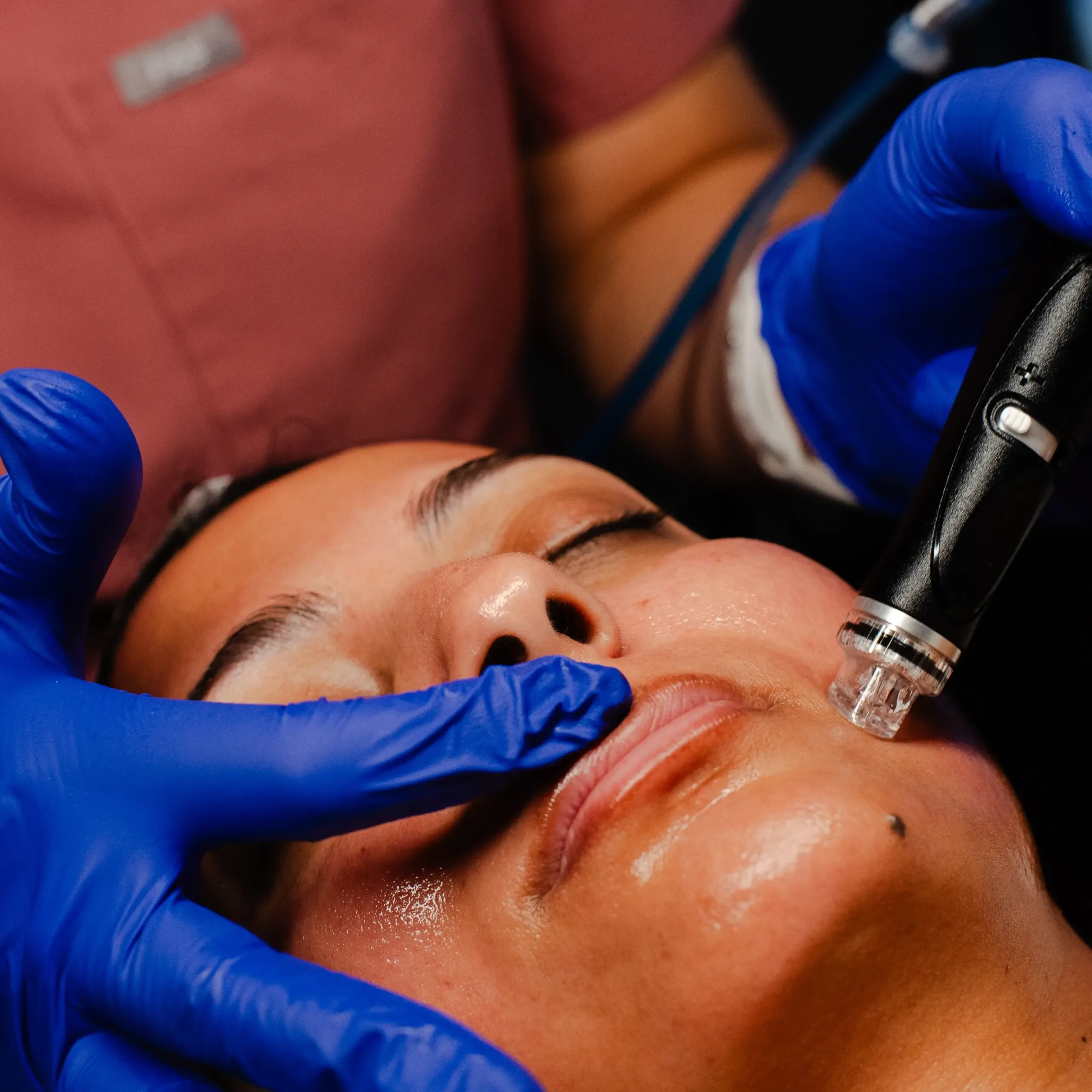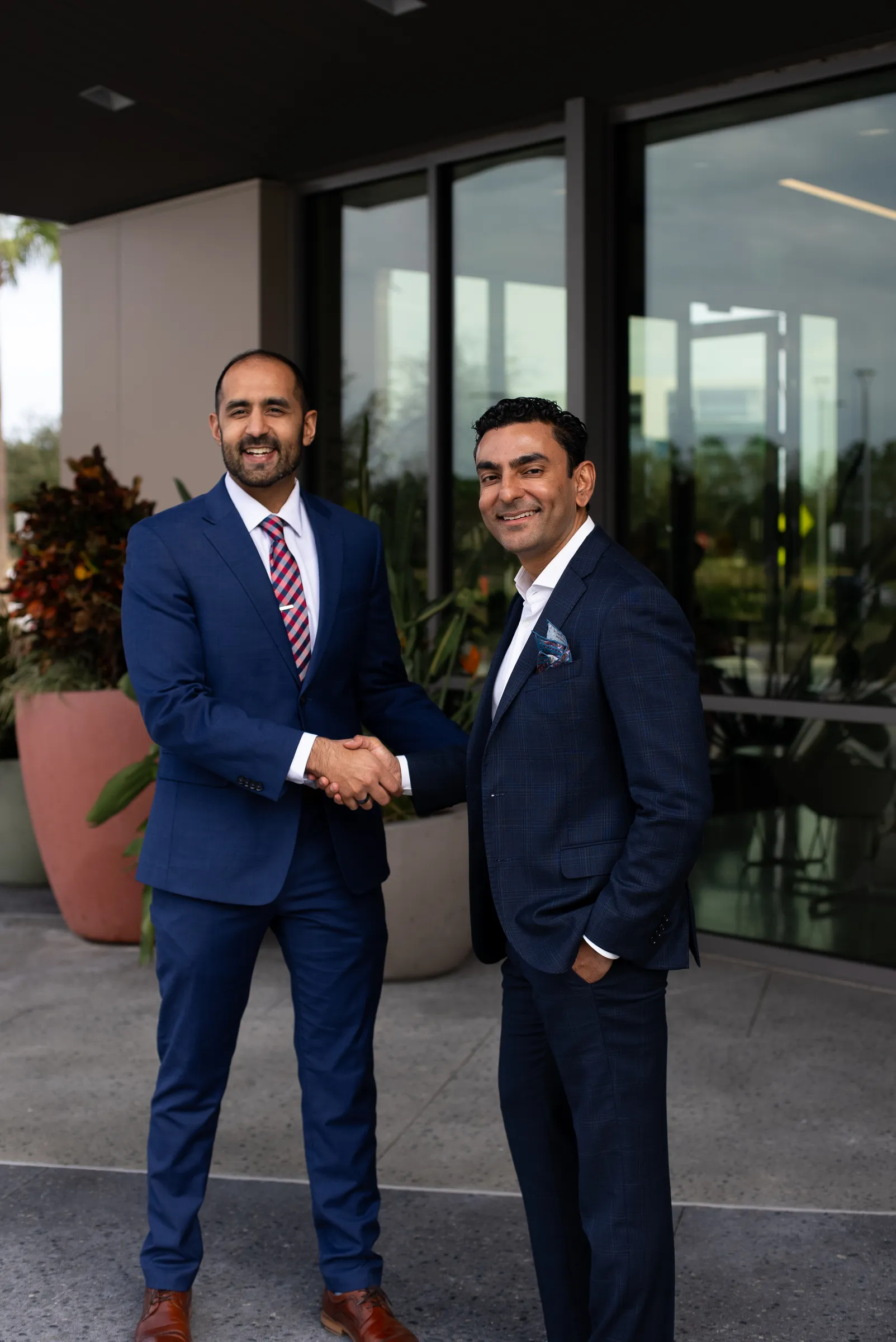Glaucoma: The Silent
Thief of Sight
Glaucoma is a leading cause of irreversible vision loss, and early detection and treatment are essential for maintaining healthy eyesight. At Lake Nona Ophthalmology, we are dedicated to providing exceptional eye care to preserve and protect your vision. Our team of specialists offers comprehensive glaucoma care, utilizing the latest advancements in diagnostic technology and treatment options to manage this complex condition.

What is Glaucoma?
Glaucoma is a group of eye diseases that damage the optic nerve, often due to increased intraocular pressure (IOP). The optic nerve is responsible for transmitting visual information from the eye to the brain, and damage to it can lead to vision loss. Because glaucoma typically progresses slowly and without symptoms, it is often referred to as the “silent thief of sight.”
Types of Glaucoma
There are several types of glaucoma, each with different causes and characteristics. The most common forms include:
- Primary Open-Angle Glaucoma (POAG): The most common form of glaucoma, POAG develops gradually as the drainage angle in the eye becomes less efficient, leading to increased eye pressure. This form typically affects both eyes and progresses without noticeable symptoms until significant vision loss occurs.
- Angle-Closure Glaucoma: This type of glaucoma occurs when the iris is too close to the drainage angle of the eye, blocking fluid from draining properly. It can develop suddenly and cause acute symptoms such as severe eye pain, nausea, and blurred vision. Angle-closure glaucoma is a medical emergency and requires immediate treatment.
- Normal-Tension Glaucoma: In this type, optic nerve damage occurs even with normal eye pressure. The cause is not fully understood, but factors such as reduced blood flow to the optic nerve may play a role.
- Congenital Glaucoma: This rare form affects infants and is caused by abnormal eye development. Early diagnosis and intervention are crucial to prevent permanent vision loss.
- Secondary Glaucoma: This type develops as a result of another condition, such as an eye injury, infection, or medication use, that raises eye pressure.

How Glaucoma Affects Vision
Glaucoma typically begins by affecting peripheral (side) vision, and if left untreated, it can progress to more central vision loss. Since the damage to the optic nerve is irreversible, early detection and treatment are key to preventing further deterioration of vision. Without proper management, glaucoma can lead to blindness, which is why regular screening is essential, especially for those at higher risk.
The Importance of Glaucoma Screening
Regular eye exams and glaucoma screenings are crucial for detecting the disease before significant vision loss occurs. At Lake Nona Ophthalmology, we offer comprehensive glaucoma screenings, which may include:
- Tonometry to measure intraocular pressure
- Optic Nerve Imaging to assess the health of the optic nerve
- Visual Field Testing to detect peripheral vision loss
- Pachymetry to measure the thickness of the cornea, which can influence glaucoma risk
Early diagnosis through regular screenings can help us create a treatment plan to control the disease and prevent further vision loss.

Risk Factors for Glaucoma
Certain individuals are at a higher risk of developing glaucoma, including:
- Age: Individuals over 60 are at greater risk, with the risk increasing with age.
- Family History: Those with a family history of glaucoma have a higher chance of developing the condition.
- Ethnicity: African Americans, Hispanics, and Asians are at higher risk for specific types of glaucoma.
- High Eye Pressure: Increased intraocular pressure is the most significant risk factor for glaucoma.
- Other Health Conditions: Conditions such as diabetes, high blood pressure, and heart disease can increase the risk of glaucoma.
- Previous Eye Injuries: A history of eye trauma or surgery can increase the likelihood of developing glaucoma.
Treatment Options for Glaucoma
At Lake Nona Ophthalmology, we offer a variety of treatment options to manage glaucoma, with a focus on maximizing patient comfort and safety. Treatment options may include:
1. Medications (Eye Drops)
The first line of treatment for glaucoma is often medicated eye drops designed to lower intraocular pressure. There are several classes of drops, including:
- Prostaglandin analogs: Increase fluid drainage from the eye.
- Beta-blockers: Reduce fluid production in the eye.
- Alpha agonists: Both reduce fluid production and increase drainage.
- Carbonic anhydrase inhibitors: Decrease fluid production.
- Rho kinase inhibitors: Improve fluid drainage.
Our team will work with you to determine the best medication based on your specific condition and lifestyle.
2. Laser Treatment
Laser therapy can be an effective option to treat glaucoma, especially when eye drops alone are insufficient. Laser procedures are minimally invasive and can help reduce intraocular pressure by improving the eye’s drainage system. Common laser treatments include:
- Laser Trabeculoplasty: Used to treat open-angle glaucoma by improving the drainage angle’s function.
- Laser Iridotomy: Used to treat narrow angles or angle-closure glaucoma by creating a small hole in the iris to allow fluid to drain.
- Laser Cyclophotocoagulation: A more advanced laser treatment used to reduce the production of eye fluid.
3. Minimally Invasive Glaucoma Surgery (MIGS)
For patients with more advanced glaucoma or those who do not respond well to medications and laser treatments, minimally invasive glaucoma surgery (MIGS) offers a safe and effective option. MIGS procedures are performed through tiny incisions and involve the implantation of devices designed to help the eye drain fluid more effectively. These procedures offer a faster recovery time and fewer complications compared to traditional glaucoma surgeries.
Popular MIGS Procedures Include:
- iStent®: Microstents implanted in the eye to improve fluid drainage.
- Hydrus®: A flexible microstent spanning 90 degrees to improve fluid drainage
- Omni Surgical System®: An implant-free, minimally invasive technology indicated for canaloplasty followed by trabeculotomy to reduce intraocular pressure
Why Choose Lake
Nona Ophthalmology?
At Lake Nona Ophthalmology, our commitment to providing the highest quality care, coupled with cutting-edge technology, sets us apart. We offer:
- Expertise and Experience: Our board-certified ophthalmologists have extensive experience performing cataract surgery with premium IOLs, including Toric lenses.
- Personalized Care: We understand that each patient is unique, and we work closely with you to create a customized treatment plan tailored to your vision goals.
- State-of-the-Art Technology: Our advanced diagnostic tools ensure precise measurements and optimal outcomes, allowing us to select the best Toric IOL for your eyes.
- Comprehensive Support: From your initial consultation through post-surgery care, we are with you every step of the way to ensure a smooth and successful experience.






